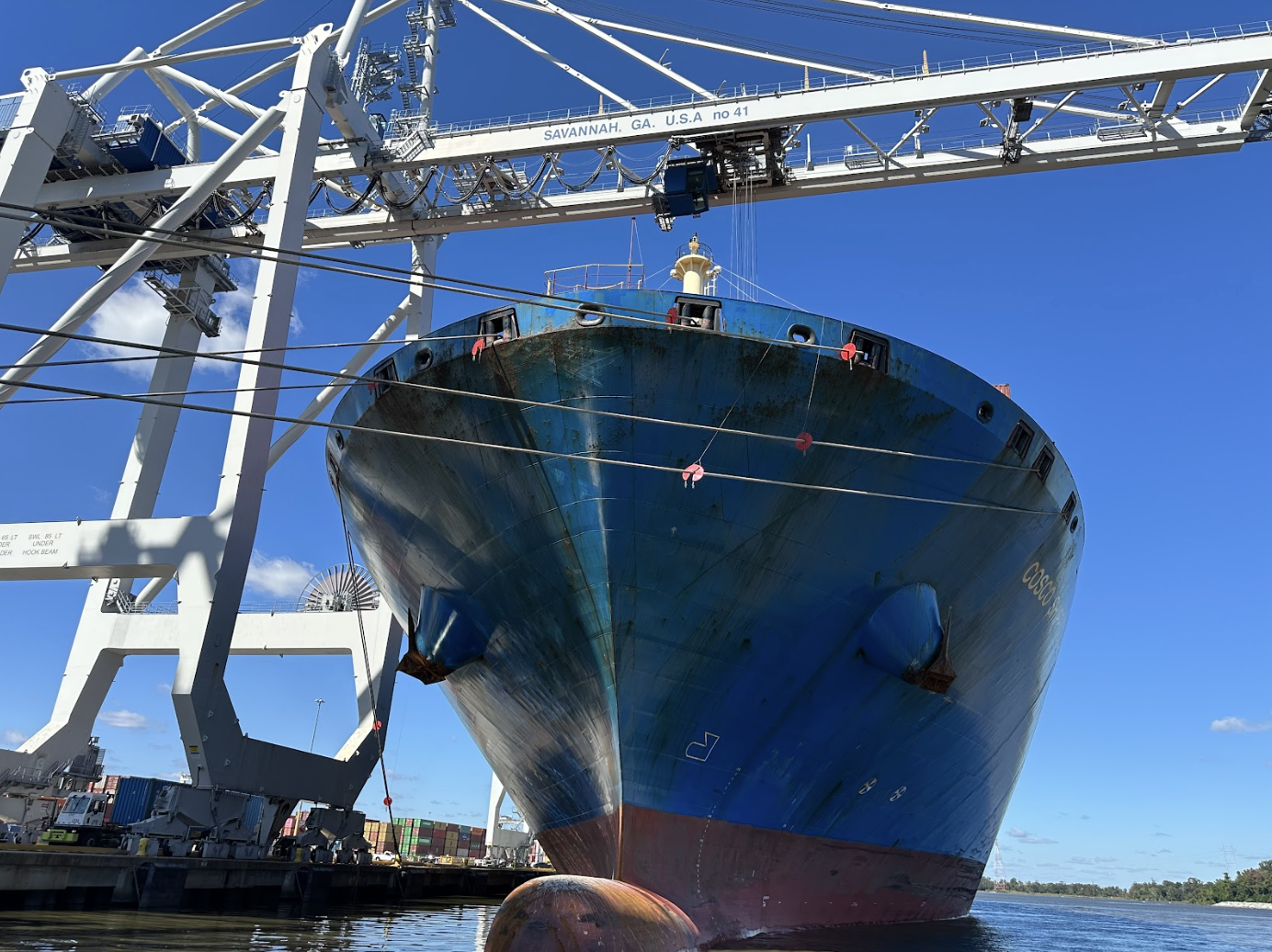I write this on Southwest flight #499 from Savannah, GA to Baltimore. I’m returning from the Baltimore Metropolitan Council’s (BMC) annual Chesapeake Connect trip a half-day early so that I can receive an award tonight from Preservation Maryland for the work we are doing at Crownsville.
BMC is the Metropolitan Planning Organization for the region. Its board, which I currently chair, is comprised of leaders from Baltimore City, Baltimore County, Howard County, Harford County, Carroll County, Queen Anne’s County, and Anne Arundel. It does research and planning on transportation, housing, workforce, energy, and anything else that its member governments ask of it.
Chesapeake Connect trips take about seventy government, business, and nonprofit leaders to metropolitan areas that have things in common with ours. The formula is brilliant. BMC staff do a bunch of research before the trip to figure out what lessons the destination has to teach us and who is best suited to tell us the stories. They do a pre-visit to make sure that everyone we hear from and everywhere we go is vetted and worth our time. We hear from leaders of their governments, their business organizations, their community development organizations, and whoever is doing innovative things to improve the quality of life for the people there. The perspectives on what’s happening are diverse.
Before Savannah, I did these trips to Nashville, Detroit, St. Louis, Minneapolis/St. Paul, and Philadelphia. There’s a theme I’ve noticed that runs through all of them. Everywhere people pursue and celebrate economic growth, and everywhere people complain about its negative consequences.
Our first visit in Savannah was to Georgia Quick Start, the top-ranked job training program in the country. We saw a brand-new facility where large employers that are relocating to or expanding in Georgia have their new employees trained for free according to their specifications. We were wowed. It’s a huge state commitment, and it’s credited with attracting major investors for the Georgia economy - employers like Hyundai who announced three years ago that they will build 500,000 cars per year in Georgia. Yes, that’s the same Hyundai project where ICE showed up last month and detained more than 300 Korean workers. Not helpful to their efforts!
The next speaker was the Director of their Metropolitan Planning Council. She discussed the impacts of having more jobs than applicants, and that the new people relocating to Georgia for the Hyundai jobs need roads to drive on, schools for their kids, and places to live. She talked about how the increased housing demand has driven prices so high that service workers who used to live in Savannah can no longer afford to live there. They are moving further and further out of town, creating not only stress in their lives, but also on the roads.
Then the head of the Chamber of Commerce stood up and joked about all the battles they wage with the planning department. It all sounded very familiar.
That night we heard from the Savannah City Manager and the next morning Mayor Van Johnson entertained and informed us. He put the city’s challenges into perspective, and I definitely came away ready to vote for him if I ever move to Savannah. He’s President of the African American Mayors Association, and seated in the front row was his First Vice-President, Baltimore Mayor Brandon Scott. It made for a pretty friendly atmosphere.
Next, we piled into buses for a short trip to First African Baptist Church, founded in 1777, and heard fascinating stories from its longtime Pastor Thurmond Tillman. He talked about the original founders siding with the British in the Revolutionary War, based on their promise to end slavery, and about the post-Civil War negotiations in Savannah that secured the 40 acres and a mule commitment that was later rescinded. He also talked about the church’s role in campaigns for justice that are still underway in Savannah.
They had us divided into four groups for lunch and afternoon tours: Culinary Institute, Gulfstream jets and the Technical College, the College of Art and Design, Film Savannah and Tradebridge, and Savannah Riverfront Development and the Port. Mine was the last, and hearing about the growth of the port as we motored to within twenty feet of massive container ships that were being loaded by multi-million dollar electric cranes was pretty fascinating. Our tour guide was from the Port Authority, and I don’t think he was aware that among us was the Executive Vice President of Tradepoint Atlantic, who was carefully listening for trade secrets as he makes plans for the Port of Baltimore to outgrow Savannah and take their number three spot among US ports.
Adjacent to the container cranes was a mega-yacht servicing facility, and one of our group googled a 282-foot yacht parked there called Man of Steel. It belonged to Steven Spielberg and was sold to a Canadian steel tycoon in 2021 for an estimated $150 million. It only has seven guest cabins, but includes a cinema, two swimming pools, a jacuzzi, a gym, a wellness center, and a dance floor.
Even though I had to leave early the last day and missed the resiliency presentation at Tybee Island, I was there this morning for the panel with the Housing Authority, the City, and the nonprofit community development leader from the part of the city where “the projects,” the food desert, and the poverty is concentrated. This is always the part of these trips where you find out if it’s a city that cares about all of its people, or just some.
They’re making some progress. They’ve done redevelopment of public housing without evicting the residents, a child care center, a tiny home community, and they have a lot more in the pipeline. The secret, they say, is creative thinking in places you often don’t find it - the City and the Housing Authority. But they also had a young man who grew up there, got elected to the State Senate, and now runs the nonprofit. He stole the show with his breadth of knowledge, passion, and observations about “the bureaucracy” versus raw political power.
When I compare the challenges faced by all of the cities we’ve visited on these trips with what I saw last summer on our study trip to Sweden, it becomes very clear in my mind that our problem is national. We encourage states to compete with one another for the basic thing we all need, which is economic growth. The owners of the large corporations, the ones making investment decisions, have extraordinary leverage. They make great deals for their bottom lines and accumulate extraordinary wealth, but the local jurisdictions are left without the tax base to build the hard and soft infrastructure that is the foundation of a fair economy.
So folks get to look at the $150 million yacht that comes into town for repairs, but can’t catch a bus to grandma’s house across town where they sleep in the basement while not at either of the two jobs they work to pay for health insurance, food, and student debt.
And that’s why voters are angry.
Until next week…

